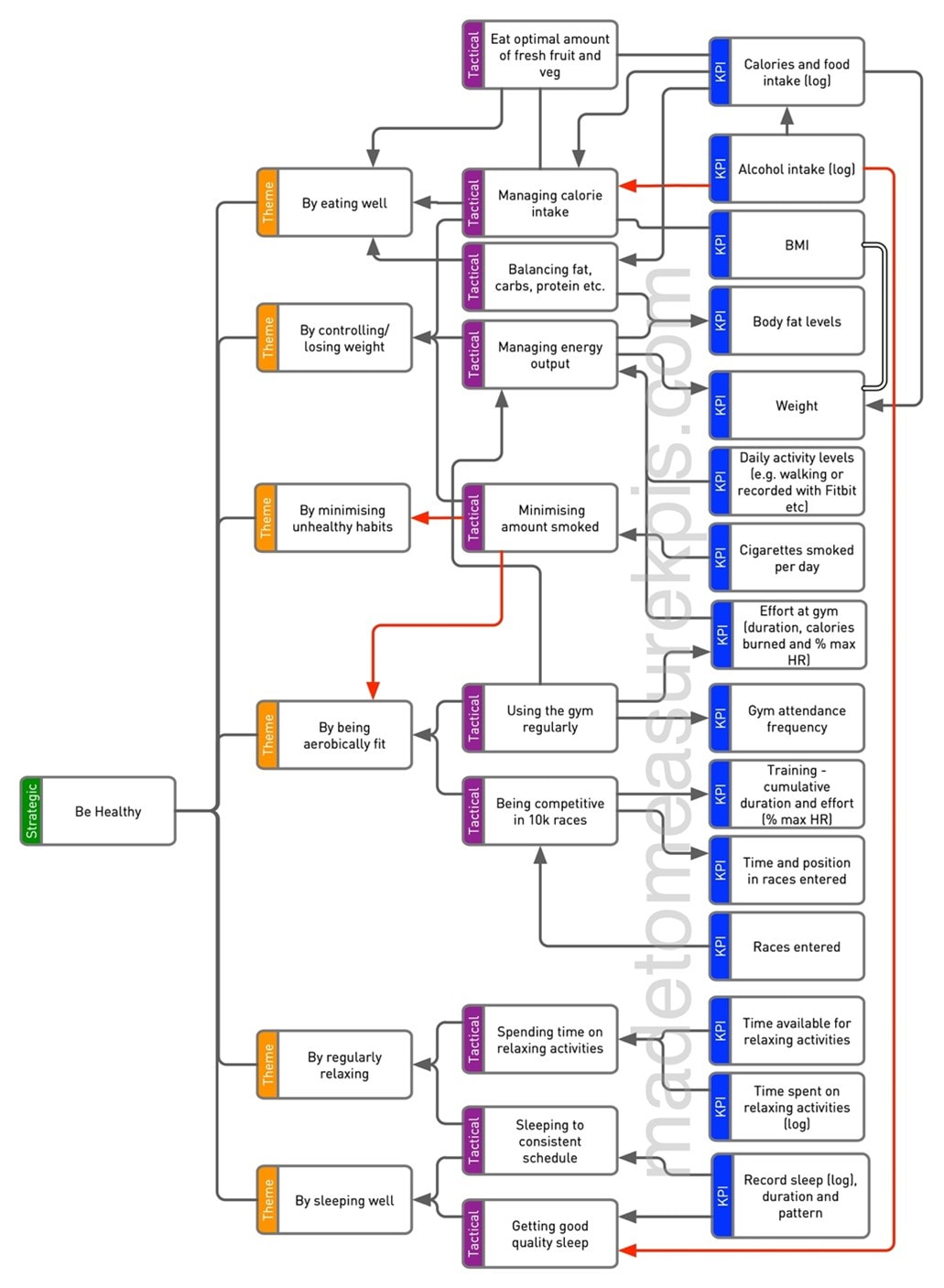- Volkswagen says diesel scandal has cost it 31.3 billion euros - Reuters, March 17th 2020
- PPI In Numbers: A Look At The Scale Of Britain's $59 Billion Consumer Scandal - Forbes, Aug 29th 2019
- NHS targets 'may have led to 1,200 deaths' in Mid-Staffordshire - The Telegraph, March 17th 2009
How do we make sure we target the right KPIs?
When you are doing some home improvement work, choosing the right tools is crucial. A screwdriver is the perfect tool for putting a screw into a piece of wood; it's a lot less useful for hanging wallpaper. The screwdriver is neither ‘good’ nor ‘bad’, just ‘relevant’ to our goal or not. The same is true for our choice of performance measures. In business, our ‘job’ is delivering our organisation's intended strategic outcomes.
We need to identify the relevant KPIs to target. To do this, first we need to identify the right things to measure. We do this by breaking down our top-level objectives into smaller, more specific outcomes and use these to identify the indicators of success. The tool we use to do this is a visual tool called a KPI Tree.
Here is a simple example. This is a KPI Tree for the personal objective “Be healthy”….
In practice, most meaningful strategic objectives we care about need several indicators and targets to give us a complete picture. Using a multi-target approach will create a much more balanced outcome and substantially reduces the chances of the system being ‘gamed’ by those responsible for delivering the targeted outcomes. It takes more time and effort to set up than a ’single KPI’ target system, but it could be the difference between reaching your goals and hitting the news headlines for all the wrong reasons.
To learn more about a systematic method for identifying the right targets and incentives for your organisation head to the K2 Enterprises course GAMED: Why targets and incentives fail and how to fix them.



 RSS Feed
RSS Feed